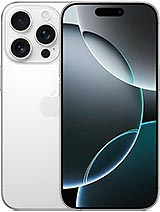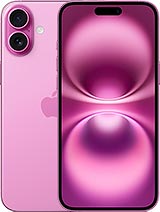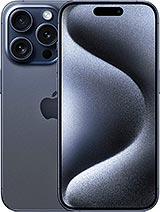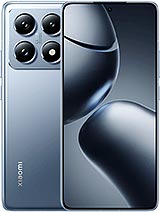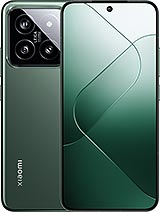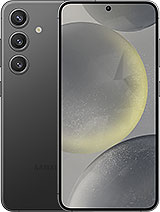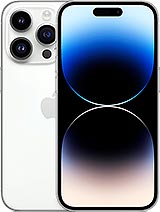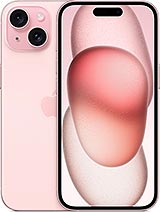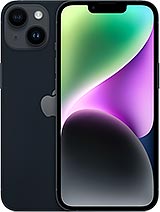Apple iPhone 16 review

Apple iOS 18
Apple iPhone 16, 16 Plus, 16 Pro and 16 Pro Max come with the latest available Apple iOS 18 pre-installed. While Apple tried to present this new iteration as one of the biggest redesigns, it doesn't feel that big in day-to-day use. However, allowing for deep personalization options across the homescreens and interface does have the potential to make the UI rather unique and different, something which has been lacking on iOS through the years.
All iPhones will get at least five years of iOS updates, which has been an Apple thing for years.
You can check out our iOS 18 feature walkthrough for a deeper dive in what's new in this generation of the iPhone OS.
Connectivity
The iPhone 16 comes with a variety of network connectivity options depending on your region. In certain countries, Apple also offers satellite connectivity on the iPhone 16 for emergency pings outside of cell range and Roadside Assistance via satellite (subscription required).
Emergency SOS and Find My via satellite do still have some regional limitations, too.
The iPhone 16 has a tri-band Wi-Fi 7 and Bluetooth 5.3 with LE support for local connectivity. Indeed, these seem to be the first non-Pro iPhones to support the 6GHz Wi-Fi band. NFC is on board for things like Apple Pay and Name Drop contact sharing.
The iPhone 16 also has a second-generation Apple Ultrawideband (UWB) chip. It enables precise Find My with directional arrows and has up to three times increased range compared to the original Apple U1 chip. You can also use precision finding in a crowd with Find My Friends. We should note that the UWB chip and its functionality are not available in every market and are disabled in some countries due to regulatory issues.

The Type-C port on the iPhone 16 and 16 Plus is backed up by a USB 2.0 data connection, which means a theoretical max transfer speed of 480 Mbps. You have to go with a Pro model for a faster USB connection.
Video output is supported, however. It uses the Display port DP (up to 4K) via Type-C Alt mode, which means that most standard Type-C hubs with a video interface should be able to get a video feed out of the phone. By default, you get a mirror of the display without any other fancy options like a dedicated desktop mode or anything of the sort. In other words, it does a simple screen mirror for the UI.
Performance, benchmarks, stress tests
This year's big upgrade for the iPhone 16 and 16 Plus is the Apple A18 chipset, which is two generations ahead of what the iPhone 15 and 15 Plus had - the A16. This is a second-gen 3nm chip that is both more powerful and more efficient.
The Apple A18 has a six-core processor with two performance cores working at 4.04GHz and four efficient cores clocked at 2.2GHz. The GPU has a 5-core design and supports improved hardware raytracing, among others. Both phones now come with 8GB of RAM. Our iPhone 16 review unit has 128GB of fast onboard NVMe storage.
Long story short, the A18 CPU is 30% faster than the iPhone 15 CPU and 60% faster than the iPhone 12 CPU. The GPU is 40% faster than the iPhone 15 and twice as fast as the iPhone 12.
Focusing on comparing just the iPhone 16 and 15, the 2024 phone can offer the same CPU performance while using 30% less power and the same GPU performance while using 35% less power. Apple also improved the system memory bandwidth by 17% for AI purposes.
The thermals should also be improved, achieving 30% higher sustained performance on the iPhone 16 and 16 Plus. This included reworking the motherboard and including a thermal substrate made from 100% recycled aluminum.
Some games that were incompatible with the iPhone 15 and 15 Plus are now compatible with the mainstream iPhones thanks to all the hardware upgrades - we are talking about Resident Evil 7: Biohazard and Assassin's Creed: Mirage. Honor of Kings: World will be available next year with an ultra graphics mode optimized for iPhone 16. The GPU also has hardware-accelerated ray tracing for games like War Thunder Mobile.
And now, let's look at some benchmark scores!
We have decided to add some of the most recent Android flagships for comparison, even if the cross-platform benchmarks should always be taken with a huge pinch of salt.
The new Apple A18 CPU inside the iPhone 16 does score about 20% more than the A16 inside the iPhone 15.
There is also between 30% and 60% jump in GPU performance depending on the 3D test.
You can also see the massive jump between the different generations of NPUs inside the iPhone chips via the Geekbench AI scores.
Apple promised an improvement in sustained performance, and it has delivered.
The iPhone 16 scored 78% CPU and 78% GPU stability. The GPU stability, in particular, is up from 51% on the iPhone 15, which is thoroughly impressive.
Overall, the iPhone 16 offers flagship-grade performance and stability. It doesn't get terribly hot even after prolonged stress tests, and we think it will be marvelous even as a gaming device.
Reader comments
- Ackeboy
- 10 Apr 2025
- Mgb
The iphone 16 is a great phone dont get me wrong but heres the catch, a nice case that will have my camera control button save costs 55$ and if i get one that has no protection there it will cost me 750$!! its crazy, 60 youre noticing the 60 fps scre...
- Mr shuvo Islam
- 28 Mar 2025
- 6p}
Very nice
- Anonymous
- 14 Mar 2025
- HBf
Come to see the camera review of the I16 after reading the one from the I16e? Where was the reviewer of the I16e when the I16 was tested? The difference in tone is like night and day for what are similar experiences. Here the I16 has an exce...

